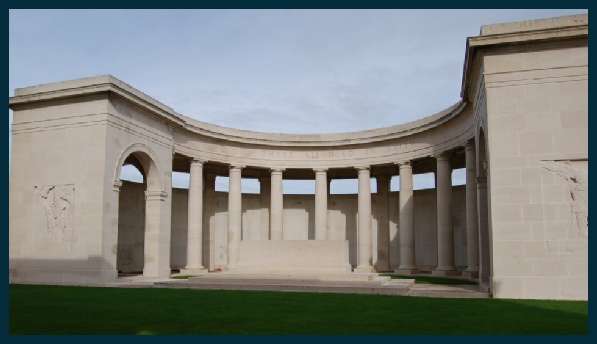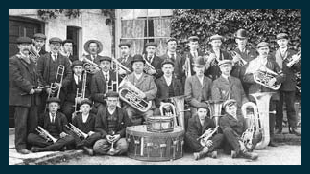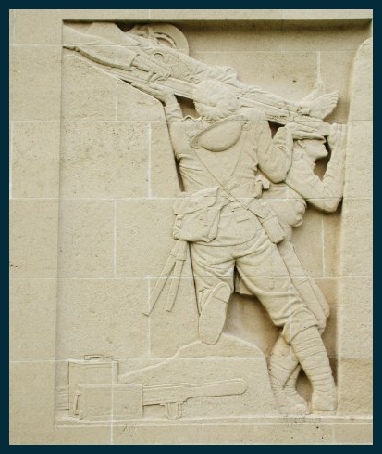Copyright © All rights reserved.



George W. Harrison

By 1911 the family had moved to Wentworth Street, presumably when they gave up the hotel business in 1901, and George was working for a grocer, according to the Malton messenger working for Taylor and Rowntree’s.
1911 Census –resident at 30 Wentworth Street, Malton
HARRISON, Thomas William, Head, Married, M, 48 , House Painter, Yorkshire York,
HARRISON, Lydia, Wife, Married 24 years, F, 49 , , Essex Bulmer,
HARRISON, George Wilson, Son , M, 14 , Grocers Apprentice, Yorkshire Malton,
HARRISON, Evelyn, Daughter, , F, 12 , School, Yorkshire Malton,
HARRISON, Dorothy, Daughter, , F, 9 , School, Yorkshire Malton,
HARRISON, Arthur Henry, Son, , M, 7 , School, Yorkshire Malton,
Soon after the outbreak of war, George signed up with the 5th Yorkshires, on 15th October 1914. Aged 17, he was 5’4 “ tall and seemed generally healthy. It is noteworthy that all his initial paperwork assumes that his second name was William rather than Wilson!In 1915 the Battalion became part of 150th Brigade, 50th (Northumbrian) Division. In early April the Division was warned that it would go on overseas service and entrainment began on 16 April, landing at Boulogne.
The advance party left Newcastle on April 15th and arrived in France on the morning of 17th April and were joined by the rest of the Battalion on 18th. After less than 24 hours in Camp they were entrained, arriving at Cassels at 6.0 am and marched twelve ‘hot and very tiring’ miles to billets outside the village of Steenvoorde, where they finally rested, for three whole days. On the 23rd they were on the move again, proceeding by Motor Buses to Vlamertinghe and from thence marched to A Huts at Ypres arriving just as the German army had attacked at Ypres, using poison gas for the first time. ‘As they tramped along the pave road, with Vlamertinghe and Ypres ahead, the boom of guns became even louder. Crowds of refugees were met, hurrying westwards with handcarts perambulators and almost any kind of vehicle laden with all the worldly possessions left to them’
That night they moved forward to the banks of the Yser Canal in support of 2nd Zouaves. The Battalion lined the Canal banks under the shelter of a ridge before daylight, the men shortly afterwards digging themselves into shelter holes. B Company, which was somewhat exposed, suffered minor casualties from overdropping bullets. That morning they had their first experience of shell fire, but over the next few days were fully involved in the chaos of the Battle of Ypres and sustained heavy casualties – a true baptism of fire.
In May the battalion was moved to an open field in Brielen where they dug in and companies were rotated to Sanctuary Wood and Zouave Wood where they came under gas attack as well as shelling, continuing to sustain losses. By the 8th May, the Malton Messenger carried an article reporting that in order to enable speedy replacement of casualties sustained by the 4th and 5th Battalions the height requirement had dropped to 5’1”.
The end of June saw them billeted in farms near Dranoutre and in mid-
In December they were moved to Poperinghe, where they went into trenches at Dickiebusch. However George was not with them for some of this time -
On 9th of September George was transferred to the York and Lancaster Regiment as a fully-
In March the battalion moved to Miraumont where they continued to alternate front line trenches and support. On 20th March they moved into dugouts at Hawthorne Ridge and for the rest of the month were engaged in railway work. April was largely uneventful, spent largely under canvas while engaged in working parties and support roles.
On 3rd May they moved to Bullecourt and attacked the Hindenburg Line. The attack was unsuccessful though many of the men penetrated the Hindenburg Line and even the support lines behind it. However most of those who did succeed paid for it with their lives and few returned to their comrades. About 260 officers and men were dead, wounded or missing at the end of the day. They remained on the front line for the next couple of days before moving to Courcelles le Comte for re-
June saw the battalion entirely engaged in training, before returning to the line on 5th July at Riencourt. They spent most of June alternation between front line and reserve, and suffering steady attrition from shelling. On the 23rd July they moved into camp for more training, returning to the front line at the end of the month. On the 28th July, George was appointed to the rank of Lance-
Most of August was spent I the line, but it seems to have been extremely uneventful, and they returned to camp for a week’s training on 29th August. The first fortnight of September was spent back on the front line at Bullecourt, coming under steady shellfire and sustaining regular casualties. The rest of the month was spent in training and work parties. Again the first week of October saw them in the front line again but by the 8th they were back in camp and training for the rest of the month and for the first fortnight of November.
After a week on the march, they arrived at Havringcourt on 20th November 1917 to renew their assault on the Hindeburg Line. The attack started at 7.00 a.m. and by 10.00 a.m. they had achieved their objective and were consolidating. They had captured prisoners and a good deal of equipment – machine guns, rifles, flame-
When his personal effects were returned to his mother, they consisted of letters, a photograph, a small note book and a religious book. She contacted the War Office saying that when last on leave he had been given a new watch, and requesting its return. There is no record of it being found.
George Wilson Harrison was the fourth son of Thomas William and Lydia (nee Bunn) Harrison who married in New Malton on 27th March 1887. He was born in the last quarter of 1896, in the Malton area
Thomas and Lydia lived at 59 Market Place, (where Linton Pet shop is now) and according to the local community website, in addition to the painting business which Thomas ran, kept a Temperance hotel from 1893 to 1901. They had ten children two of whom died young.
1901 Census – resident at 59 Market Place, Malton
HARRISON, Thomas William, Head, Married, M, 38, Painter, York Yorkshire,
HARRISON, Lydia, Wife, Married, F, 39, , Bulmer Essex,
HARRISON, James William, Son, Single, M, 12, , Malton Yorkshire,
HARRISON, Edgar Thomas, Son, Single, M, 11, , Malton Yorkshire,
HARRISON, Robert, Son, Single, M, 9, , Malton Yorkshire,
HARRISON, George Wilson, Son, Single, M, 4, , Malton Yorkshire,
HARRISON, Rose Annie, Daughter, Single, F, 6, , Malton Yorkshire,
HARRISON, Evelyn Helen, Daughter, Single, F, 2, , Malton Yorkshire,
SIMPSON, Arthur, Boarder, Married, M, 32, Lang Agents Clerk, Halifax Yorkshire,
SIMPSON, Mary, Boarder, Married, F, 28, , Halifax Yorkshire,
SIMPSON, Phyllis, Boarder, Single, F, 1, , Leeds Yorkshire,
HARGRAVES, Frederick, Boarder, Single, M, 24, Shoemaker, Putsey Yorkshire,
REACHER, Mary, Boarder, Widow, F, 28, Sick Nurse, Leeds Yorkshire,
The family were active members of St Michael’s church – George and his brothers are recorded on the War Memorial as choristers. All three brothers were also members of Malton White Star Band –possibly three of the boys in the front row of this photo taken about 1907

